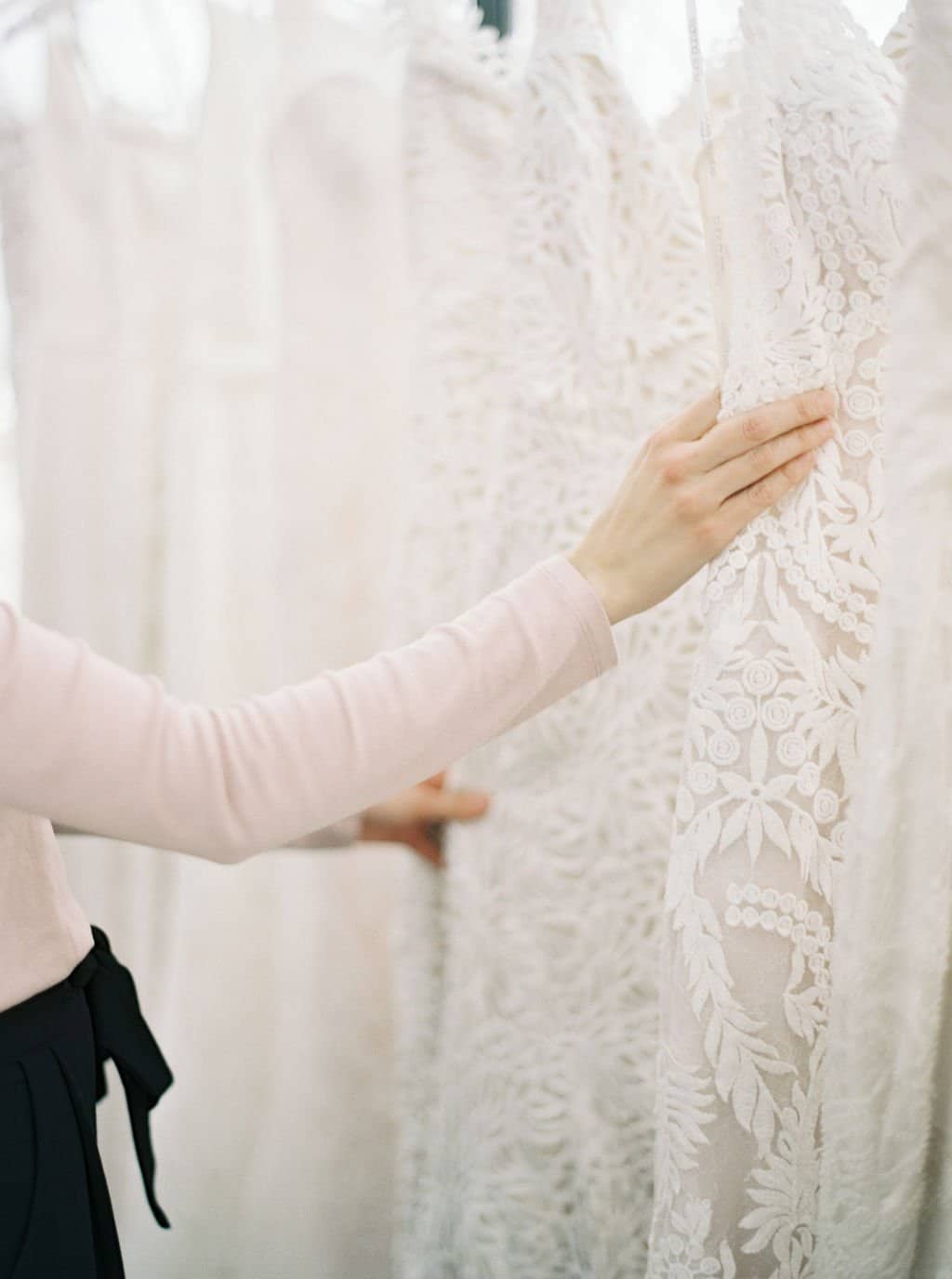How to Set the Right Wedding Dress Budget for YOU

“How much should I budget for my wedding dress?”
It’s a question I hear from so many brides. It’s also a question that you need to answer BEFORE you start shopping if you want to achieve dress success and avoid disappointment, stress, and regret.
The range of prices for bridal gowns is enormous—from as low as $100 at big box stores to closer to $10,000 for a custom designer gown.
You may be thinking, “I’m only going to wear this dress for one day. Is it really worth a big expense?” I get it. But I’d also encourage you to think of it this way: it is one very important day that you do not get to do-over.
You have probably invested money in a photographer (and maybe even a videographer) to document this day. Your wedding day is one you and your family will look back on forever. So how much do you value feeling like you’re most beautiful and comfortable self?
Going into a bridal boutique without a budget is a lot like visiting a potential home without knowing how big of a mortgage you can afford—a bad plan.
You do not want to fall in love with a bridal gown and then realize you can’t afford it. You also want to know how much you can comfortably spend to maximize the quality, fit, and fabric of the garment you select.
Here are some things to think about when setting your wedding dress budget.
Doing your wedding dress research is crucial.
Searching Pinterest or IG is a great way to get inspired for your wedding dress look. Notice which styles and designers catch your eye. Then you can reach out to boutiques that carry those designers and see if the designer or dress you are dreaming about fits within your budget.
Here’s the critical part that many brides miss: also keep in mind the overall price range of the gowns in the boutiques you want to visit. Don’t make appointments at boutiques that carry dresses far below or well above your price range to avoid disappointment and frustration when you shop.
With bridalwear (like everything), you get what you pay for.
What matters to you? Sustainability? Comfort in your own skin? Knowing what you care about and how it impacts the cost of a dress is important.
Factors like fabric, designer, and where and how a gown is manufactured impact the garment’s cost.
Sometimes the way dress features translate into cost can be confusing. You may think that a more understated gown should be less expensive than one with beading. However, that isn’t always the case. For instance, a plain dress that is hand-cut and sewn to order (like one of these gorgeous gowns by Suzanne Neville) will likely cost more than one that was beaded by underpaid labor or mass-produced by machine.
You might also think all dresses of the same fabric should cost the same. But even this isn’t necessarily the case. Crepe for example comes in varying thickness and weave, some with silk. These sorts of differences will impact the fit, feel, and overall cost.
Customizing a gown can help you feel more comfortable, accent your best features, and achieve a personalized look that you love. Customization comes with a cost, though, so be sure to consider that when making your budget.
There are costs besides the gown to consider as well.
When planning your budget, don’t forget the other costs related to your dress.
Many brides fail to budget for alterations. The big thing to remember is that a less expensive gown may actually require a much higher alteration cost than a made-to-measure gown. I’ve seen brides pay $500 for a dress and then have to spend nearly twice that to alter it. Meanwhile, alterations on a $4,000 made-to-measure gown could very well amount to only a few hundred. It varies depending on the material, style, and more, so I suggest giving yourself a generous cushion in this area of your budget if possible.
Undergarments and accessories are other related costs to think about. Are you considering a veil, cape, belt, or jewelry to complete your look? And even though no one but your fiancé may be seeing them, high-quality bridal undergarments can make or break the fit of your gown.
Remember, the cost of gowns has changed over time.
Asking your friend who got married three years ago what she spent on her wedding dress may not be as helpful as you think.
The cost of groceries, gasoline, and lumber has gone up over time due to inflation, tariffs, and the impact of the COVID-19 pandemic. Unfortunately, the cost of wedding gowns has done the same.
Total transparency here—when I did my annual gown shopping this year for the boutique, I was floored by the increases. It’s unfortunate, but it’s the reality: the budget a friend or relative had for their dress several years back just won’t buy the same gown today.
Once you have your budget, be open about it.
I have witnessed brides thinking one number and their mom or fiancée thinking another. It ain’t pretty. Once you set your budget, make sure you communicate it clearly to everyone who has a stake in the matter— including your stylist! If you’re clear and honest about what you can and wish to spend, it will help your stylist help you and you’ll be able to find your dress with more ease and less drama!
So, brides, get ready to sit down and give your budget some real thought. Then once you have your magic number in mind, it’s time to get out there and shop. I’ll be here waiting to help you find the dress of your dreams! xo, Malinda